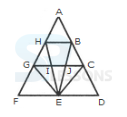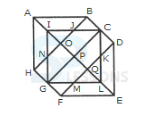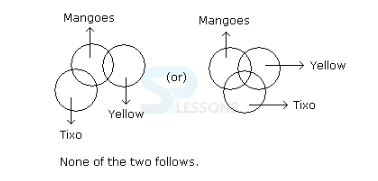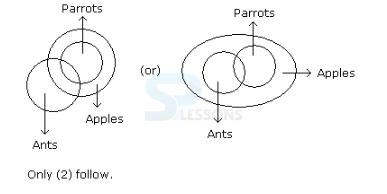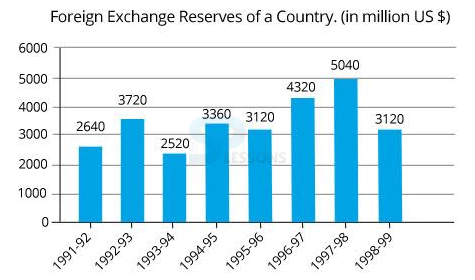 Introduction
Introduction
RRB NTPC (Non-Technical Popular Categories) 2019 – First Stage Computer Based Test (CBT), conducted in online Mode, has: a duration of 90 minutes [120 Minutes for eligible PwBD candidates accompanied with Scribe], consists of 3 sections, namely – General Awareness, Mathematics and General Intelligence & Reasoning. The 3 sections are not separately timed. There is a Negative marking in RRB NTPC First Stage CBT and 1/3rd marks are deducted for each wrong answer. The below sections gives the detailed information about RRB NTPC Reasoning in the First Stage CBT.
 Pattern
Pattern
| Exam Duration in Minutes | No. of Questions (each of 1 mark) from | Total No. of Questions | ||
|---|---|---|---|---|
| General Awareness | Mathematics | General Intelligence and Reasoning | ||
| 90 | 40 | 30 | 30 | 100 |
 Syllabus
Syllabus
[Click Here] for RRB NTPC First Stage CBT Syllabus
Note: Negative Marking: There will be negative marking and 1/3 mark shall be deducted for each wrong answer.
 Samples
Samples
Analogies
1. Choose a number that is similar to the numbers given in the set: (124, 331, 403)
- A. 242
B. 205
C. 341
D. 432
- A. CLL
B. DLN
C. ANP
D. CFP
- A. XPHBA
B. BQKAB
C. RPSRU
D. IPCJA
- A. BTASLE
B. LEBSAT
C. TASBLE
D. BATSEL
- A. 814
B. 712
C. 377
D. 669
- A. 35
B. 38
C. 39
D. 40
- A. 5
B. 8
C. 10
D. 12
- A. 18
B. 27
C. 36
D. 81
- A. 21
B. 25
C. 27
D. 33
- A. 42
B. 43
C. 51
D. 52
- A. SAJEWET
B. SAJEWAT
C. SEGVAN
D. SALWAR
- A. 3,4,2,1
B. 1,3,4,2
C. 3,4,1,2
D. 4,3,1,2
- A. 2,4,5,3,1
B. 5,3,1,2,4
C. 4,2,3,5,1
D. 3,5,2,1,4
- A. Satin
B. Satire
C. Saturn
D. Satiate
- A. 3,5,1,4,2
B. 3,5,4,1,2
C. 5,3,4,2,1
D. 5,3,2,1,4
- A. GERH
B. GRHE
C. GREH
D. GHRE
E. GEHR
- A. OFPOMN
B. OFSMPN
C. OFUMPN
D. OFUNPM
E. OFUMON
- A. VXDQ
B. XUGX
C. ROAR
D. VSOV
E. VZCP
- A. MEXICO
B. MERCURY
C. JAPAN
D. MIDNIGHT
E. HONDUS
- A. IBLLION
B. IBOILLN
C. IBLLOIN
D. IBLOILN
E. IBOLLIN
- A. 16
B. 28
C. 32
D. 44
E. None of these
- A. 2
B. 18
C. 42
D. 6
E. None of these
- A. 15
B. 25
C. 27
D. 45
E. None of these
- A. 15 – 5 + 6 x 20 + 10 = 6
B. 8 + 10 – 3 + 5 x 6 = 8
C. 6 x 2 + 3 + 12 – 3 = 15
D. 3 + 7 – 5 x 1 0 + 3 = 10
- A. 80
B. 25
C. 24
D. 5
- A. Confluence
B. Concourse
C. Radiation
D. Concentration
- A. Long-Short
B. Black
C. Head
D. Friend
- A. 206
B. 125
C. 27
D. 8
- A. Iron
B. Steel
C. Gold
D. Tin
- A. Book
B. Journal
C. Article
D. Newspaper
Relationships
1. Pointing to a photograph of a boy Suresh said, "He is the son of the only son of my mother." How is Suresh related to that boy?
Hence, A is a horticulturist.
2. Who is a physicist?
Hence, C is the physicist.
3. Which of the statements above is superfluous?
Since all the statements are required to analyse the given data, none of them is superfluous.
4. Who is an industrialist?
Hence, B is an industrialist.
5. Which of the following groups includes a person who likes tea but is not an advocate?
Clearly, A and C are the persons who like tea but are not advocates.
Venn Diagrams
1. Which of the following diagrams indicates the best relation between Travelers, Train and Bus?
A.
B.
C.
D.
Answer: Option (C)
Explanation:
Bus and Train are different from each other but some travelers travel by bus and some travel by train.
2. Which of the following diagrams indicates the best relation between Profit, Dividend, and Bonus?
A.
B.
C.
D.
Answer: Option (B)
Explanation:
Bonus and Dividend are different from each other. But both these are parts of profit.
3. Which of the following diagrams indicates the best relation between Women, Mothers, and Engineers?
A.
B.
C.
D.
Answer: Option (A)
Explanation:
All mothers are women and some mothers and some women may be engineers.
4. Which of the following diagrams indicates the best relation between Factory, Product, and Machinery?
A.
B.
C.
D.
Answer: Option (D)
Explanation:
Product and Machinery are different from each other but both are found in Factory.
5. Which of the following diagrams indicates the best relation between Author, Lawyer, and Singer?
A.
B.
C.
D.
Answer: Option (B)
Explanation:
All three are different professions.
Puzzle
Directions (1 - 3): (i) There is a group of five girls.
(ii) Kamini is second in height but younger than Rupa.
(iii) Pooja is taller than Monika but younger in age.
(iv) Rupa and Monika are of the same age but Rupa is tallest between them.
(v) Neelam is taller than Pooja and elder Rupa.
1. If they are arranged in the ascending order of height, who will be in third position?
Clearly, A immediately follows B.
So, the answer is (A).
5. Which of the following plays in on Monday?
F will be played on Monday.
So, the answer is (B).
- A. Brother
B. Uncle
C. Cousin
D. Father
- A. Q - N + M x P
B. P + S x N - Q
C. P - M + N x Q
D. Q - S % P
- A. Brother
B. Nephew
C. Uncle
D. Son-in-law
- A. Son
B. Brother
C. Cousin
D. Brother-in-law
-
A. Nephew
B. Uncle
C. Father or Uncle
D. Father
- A. 8
B. 10
C. 12
D. 14
- A. 16
B. 17
C. 18
D. 19
- A. 22
B. 24
C. 26
D. 28
- A. 12
B. 18
C. 22
D. 26
- A. 18
B. 20
C. 24
D. 27
- 1. Some actors are dancers.
2. No singer is an actor.
- A. Only (1) conclusion follows
B. Only (2) conclusion follows
C. Either (1) or (2) follows
D. Neither (1) nor (2) follows
E. Both (1) and (2) follow
- 1. All the flutes are instruments.
2. All the harmoniums are flutes.
- A. Only (1) conclusion follows
B. Only (2) conclusion follows
C. Either (1) or (2) follows
D. Neither (1) nor (2) follows
E. Both (1) and (2) follow
- 1. Some mangoes are green.
2. Tixo is yellow.
- A. Only (1) conclusion follows
B. Only (2) conclusion follows
C. Either (1) or (2) follows
D. Neither (1) nor (2) follows
E. Both (1) and (2) follow
- 1. All the apples are parrots.
2. Some ants are apples.
- A. Only (1) conclusion follows
B. Only (2) conclusion follows
C. Either (1) or (2) follows
D. Neither (1) nor (2) follows
E. Both (1) and (2) follow
- 1. Some pens are pencils.
2. Some pens are papers.
- A. Only (1) conclusion follows
B. Only (2) conclusion follows
C. Either (1) or (2) follows
D. Neither (1) nor (2) follows
E. Both (1) and (2) follow
- A. A
B. B
C. C
D. D
E. E
| A | B | C | D | E | |
|---|---|---|---|---|---|
| Profession | Horticulturist | Industrialist | Physicist | Journalist | Advocate |
| Profession | Tea | Coffee | Tea | Coffee | Tea |
- A. A
B. E
C. D
D. C
E. B
| A | B | C | D | E | |
|---|---|---|---|---|---|
| Profession | Horticulturist | Industrialist | Physicist | Journalist | Advocate |
| Profession | Tea | Coffee | Tea | Coffee | Tea |
- A. (iii)
B. (iv)
C. (ii)
D. (v)
E. Nil
| A | B | C | D | E | |
|---|---|---|---|---|---|
| Profession | Horticulturist | Industrialist | Physicist | Journalist | Advocate |
| Profession | Tea | Coffee | Tea | Coffee | Tea |
- A. E
B. C
C. B
D. D
E. A
| A | B | C | D | E | |
|---|---|---|---|---|---|
| Profession | Horticulturist | Industrialist | Physicist | Journalist | Advocate |
| Profession | Tea | Coffee | Tea | Coffee | Tea |
- A. ACE
B. DE
C. BCE
D. BD
E. None of these
| A | B | C | D | E | |
|---|---|---|---|---|---|
| Profession | Horticulturist | Industrialist | Physicist | Journalist | Advocate |
| Profession | Tea | Coffee | Tea | Coffee | Tea |
- A. Monika
B. Rupa
C. Monika or Rupa
D. Data inadequate
E. None of these
- A. Monika or Rupa
B. Kamini
C. Monika
D. Data inadequate
E. None of these
- A. Only (i)
B. Only (ii)
C. Only (v)
D. Either (i) or (iv)
E. None of these
- A. A
B. C
C. D
D. E
E. F
| Monday | Tuesday | Wednesday | Thursday | Friday | Saturday |
|---|---|---|---|---|---|
| F | B | A | E | D | C |
- A. E
B. F
C. C
D. B
E. A
| Monday | Tuesday | Wednesday | Thursday | Friday | Saturday |
|---|---|---|---|---|---|
| F | B | A | E | D | C |
Data Sufficiency
Directions (1 -5): In each of the questions below consists of a question and two statements numbered I and II given below it. You have to decide whether the data provided in the statements are sufficient to answer the question. Read both the statements and
Give answer:
(A) If the data in statement I alone are sufficient to answer the question, while the data in statement II alone are not sufficient to answer the question
(B) If the data in statement II alone are sufficient to answer the question, while the data in statement I alone are not sufficient to answer the question
(C) If the data either in statement I alone or in statement II alone are sufficient to answer the question
(D) If the data given in both statements I and II together are not sufficient to answer the question and
(E) If the data in both statements I and II together are necessary to answer the question.
1. Question: In which year was Rahul born?
Statements: I. Rahul at present is 25 years younger to his mother.
II. Rahul's brother, who was born in 1964, is 35 years younger to his mother.
- A. I alone is sufficient while II alone is not sufficient
B. II alone is sufficient while I alone is not sufficient
C. Either I or II is sufficient
D. Neither I nor II is sufficient
E. Both I and II are sufficient
- A. I alone is sufficient while II alone is not sufficient
B. II alone is sufficient while I alone is not sufficient
C. Either I or II is sufficient
D. Neither I nor II is sufficient
E. Both I and II are sufficient
- A. I alone is sufficient while II alone is not sufficient
B. II alone is sufficient while I alone is not sufficient
C. Either I or II is sufficient
D. Neither I nor II is sufficient
E. Both I and II are sufficient
- A. I alone is sufficient while II alone is not sufficient
B. II alone is sufficient while I alone is not sufficient
C. Either I or II is sufficient
D. Neither I nor II is sufficient
E. Both I and II are sufficient
- A. Only 1 is followed
B. Only 2 is followed
C. 1 & 2 – both are followed
D. Neither 1 nor 2 is followed
- A. Only 1 is followed
B. Only 2 is followed
C. Neither 1 nor 2 is followed
D. 1 & 2 – both are followed
- A. Only 1 is correct
B. Only 2 is correct
C. both are not correct
D. both are correct
- A. Only 1 is inherited
B. Only 2 is inherited
C. 1 & 2 – both are inherited
D. None is inherited
- A. Only 1 is followed
B. Only 2 is followed
C. 1 & 2 – both are followed
D. Neither 1 nor 2 is followed
- A. If only I follows
B. If only II follows
C. If either I or II follows
D. If neither I nor II follows
E. If both I and II follow.
- A. Only I follows
B. Only II follows
C. Either I or II follows
D. Neither I nor II follows
E. Both I and II follow
- A. Only I follows
B. Only II follows
C. Either I or II follows
D. Neither I nor II follows
E. Both I and II follow
- A. Only I follows
B. Only II follows
C. Either I or II follows
D. Neither I nor II follows
E. Both I and II follow
- A. Only I follows
B. Only II follows
C. Either I or II follows
D. Neither I nor II follows
E. Both I and II follow
- A. Only I follows
B. Only II follows
C. Either I or II follows
D. Neither I nor II follows
E. Both I and II follow
- A. if the candidate is to be selected.
B. if the data given are not sufficient to take any decision.
C. if the case is to be referred to the Asst General Manager.
D. if the case is to be referred to the General Manager.
E. if the candidate is not to be selected.
- A. if the case is to be referred to Executive Head.
B. if the case is to be referred to Vice President.
C. if the candidate is to be selected.
D. if the information is inadequate to take a decision.
E. if the candidate is not to be selected.
- A. if the case is to be referred to Executive Head.
B. if the case is to be referred to Vice President.
C. if the candidate is to be selected.
D. if the information is inadequate to take a decision.
E. if the candidate is not to be selected.
- A. if the case is to be referred to Executive Head.
B. if the case is to be referred to Vice President.
C. if the candidate is to be selected.
D. if the information is inadequate to take a decision.
E. if the candidate is not to be selected.
- A. if the case is to be referred to Executive Head.
B. if the case is to be referred to Vice President.
C. if the candidate is to be selected.
D. if the information is inadequate to take a decision.
E. if the candidate is not to be selected.
- A. 2:6
B. 3:4
C. 3:5
D. 4:4
- A. 0.7
B. 1.2
C. 1.4
D. 1.5
- A. 1992-93
B. 1993-94
C. 1994-95
D. 1996-97
- A. 95%
B. 110%
C. 115%
D. 125%
- A. 100
B. 150
C. 200
D. 620











